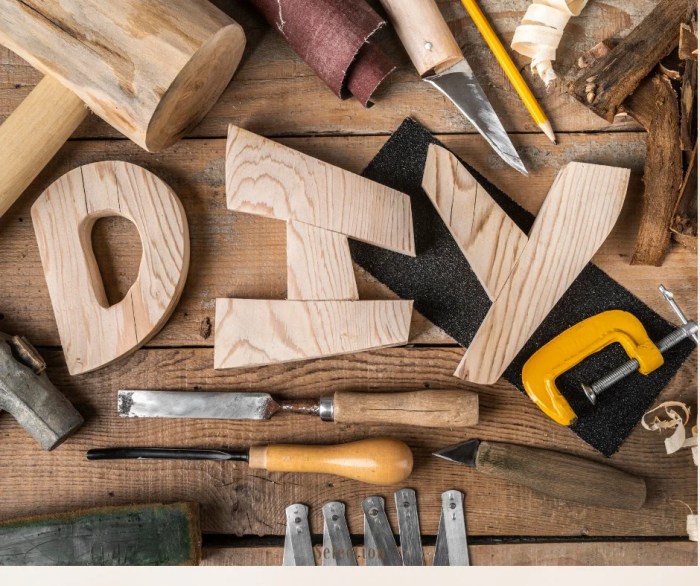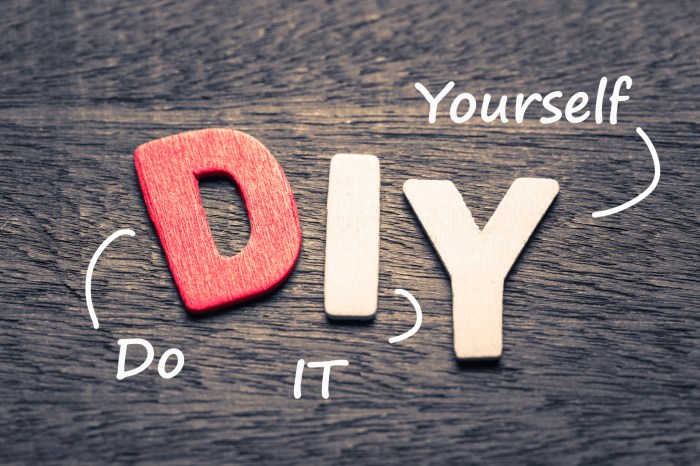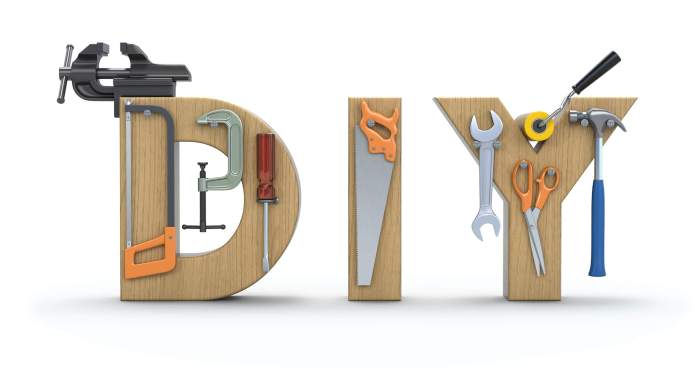DIY Smart Home Projects for Beginners sets the stage for a journey into the exciting world of home automation. These projects not only elevate your living space but also empower you to take control of your environment, offering a fulfilling blend of creativity and practicality. Engaging in DIY smart home projects enables you to tailor solutions to your specific needs, ensuring that your home is as smart as it is comfortable.
By exploring these projects, you’ll discover the vast benefits of enhancing your space on a budget, from the significant cost savings compared to commercial products to the sheer satisfaction of crafting your own devices. This guide will provide you with everything you need to get started, including essential tools, beginner-friendly projects, and advanced techniques that will transform your home into a smart haven.
Introduction to DIY Smart Home Projects
DIY smart home projects are innovative endeavors where individuals take on the task of creating and arranging their own smart technology solutions for home automation. These projects not only enhance the convenience and efficiency of living spaces but also offer a sense of accomplishment and personalization. Embracing DIY smart home projects allows homeowners to tailor their environments to fit specific needs and preferences, resulting in a more comfortable and functional living space.
The benefits of creating your own smart home devices extend beyond personal satisfaction. One significant advantage is cost savings. By utilizing readily available materials and components, DIY enthusiasts can often achieve the same functionality as commercial products at a fraction of the price. This self-sufficient approach not only fosters creativity but also encourages resourcefulness, as individuals discover and implement solutions that work best for their unique setups.
Essential Tools and Materials for DIY Projects
To embark on your DIY smart home journey, having the right tools and materials is essential. Below is a selection of basic tools that every DIY enthusiast should consider acquiring, along with their uses:
- Screwdriver Set: Essential for assembling and disassembling components.
- Multimeter: Useful for measuring voltage, current, and resistance in electrical projects.
- Soldering Iron: Required for joining electrical components securely.
- Wire Strippers: Necessary for preparing wires for connections.
- Hot Glue Gun: Ideal for quick bonding of materials without the need for screws.
In addition to tools, understanding the materials you’ll be working with is crucial. Here are some commonly used materials and their properties:
- Arduino Boards: Microcontroller boards that serve as the brain for many DIY projects.
- Raspberry Pi: A versatile mini-computer often used for more complex automation tasks.
- Smart Sensors: Devices that detect changes in the environment, such as motion or temperature.
- Relay Modules: Allow control of high-voltage devices using low-voltage signals.
| Tool/Material | Brand | Price (Approx.) |
|---|---|---|
| Screwdriver Set | Stanley | $15 |
| Multimeter | Fluke | $50 |
| Soldering Iron | Weller | $30 |
| Wire Strippers | Klein Tools | $20 |
| Hot Glue Gun | Gorilla | $10 |
Beginner-Friendly Smart Home Projects, DIY Smart Home Projects for Beginners
For those just starting with DIY smart home projects, there are several simple tasks that serve as great introductions to this exciting field. Three beginner-friendly projects include:
- Smart Light System
- Smart Thermostat
- Automated Plant Watering System
Creating a smart light system is a fantastic entry point. To set up a smart light system, follow these steps:
- Gather materials: smart bulbs, Wi-Fi module, and a smartphone.
- Install the smart bulbs in your desired light fixtures.
- Connect the bulbs to your home Wi-Fi network through the manufacturer’s app.
- Set up schedules or routines for the lights using the app on your smartphone.
- Test the system to ensure functionality.
Another excellent project involves setting up a smart thermostat using affordable components. The steps are as follows:
- Obtain a programmable thermostat and necessary wiring.
- Remove the old thermostat and connect the new one according to the wiring diagram.
- Download the thermostat’s companion app to your smartphone.
- Link the thermostat to your Wi-Fi network.
- Configure temperature settings and schedules via the app.
Intermediate DIY Smart Home Projects

Once comfortable with basic projects, enthusiasts can progress to intermediate-level DIY smart home projects that present a greater challenge. These projects often incorporate multiple devices and require a deeper understanding of electronics and programming.
Building a smart security camera system is an excellent example of an intermediate project. The process involves:
- Gathering components: IP cameras, a network video recorder (NVR), and a power supply.
- Installing the cameras at strategic locations around your home.
- Connecting the cameras to the NVR via Ethernet cables.
- Configuring the NVR settings for recording and monitoring.
- Accessing your camera feed remotely through a smartphone app.
Another exciting project is implementing smart home automation using sensors. Here’s a structured list of steps to achieve this:
- Select the sensors you want to use: motion, temperature, or humidity sensors.
- Connect the sensors to a microcontroller or hub.
- Program the microcontroller to respond to sensor inputs, triggering actions like lights or alarms.
- Test each sensor’s functionality and response to ensure proper operation.
- Integrate the system with a home automation platform for remote control.
Integrating Smart Home Devices
Integrating smart home devices into a cohesive system is crucial for maximizing their potential. To achieve seamless integration, follow these steps:
- Choose a central hub compatible with various smart devices, such as Samsung SmartThings or Amazon Echo.
- Follow the manufacturer’s guidelines to connect each device to the hub.
- Ensure devices from different manufacturers are compatible with the chosen hub.
- Create routines or automations within the hub’s app to enhance device interactions.
For voice control, using a smart assistant like Amazon Alexa or Google Assistant is straightforward. After connecting your DIY projects to the assistant, you can issue voice commands to control your devices, making your smart home experience even more intuitive.
Troubleshooting Common Issues
As with any DIY project, challenges may arise. Common problems in DIY smart home projects often include connectivity issues, unresponsive devices, or incorrect configurations. Here are solutions to some of these challenges:
- Reset devices and reconnect to the network if they are unresponsive.
- Double-check wiring and connections to ensure proper installation.
- Update firmware on devices for optimal performance and new features.
For optimizing the performance of DIY devices, ensure they are placed in locations with strong Wi-Fi signals and check that any batteries are charged or replaced as needed.
A troubleshooting chart may include the following:
| Issue | Solution |
|---|---|
| Device won’t connect | Reset and reconnect to Wi-Fi |
| Slow response time | Move closer to the router or upgrade your Wi-Fi |
| Device not responding | Check power supply and reboot |
Future Trends in DIY Smart Home Technology
The DIY smart home landscape is evolving rapidly, with emerging technologies paving the way for more innovative projects. Future trends include advancements in AI-driven automation and improved interoperability among devices.
As technology progresses, opportunities for new DIY projects will arise, such as smart home health monitoring systems and advanced energy management solutions. These innovations will allow users to monitor their health metrics or optimize energy consumption in real-time.
Predictions suggest that DIY smart home projects will become increasingly accessible due to lower costs of components and more user-friendly platforms. As a result, a growing number of homeowners will engage in DIY projects, fostering a community of enthusiasts dedicated to smart living solutions.
Resources for Learning and Improvement

To further enhance your skills and knowledge in DIY smart home projects, numerous resources are available. Websites like Instructables and Hackster.io offer extensive tutorials and project ideas to inspire your next endeavor.
Forums such as Reddit’s r/homeautomation and dedicated Facebook groups provide platforms for sharing experiences and seeking advice from fellow enthusiasts.
Online courses and workshops from platforms like Udemy or Coursera can elevate your understanding of smart technology and programming, while YouTube channels such as The Hook Up and Smart Home Solver deliver engaging content focused on DIY smart home innovations.
| Resource Type | Name |
|---|---|
| Website | Instructables |
| Forum | Reddit r/homeautomation |
| Online Course | Udemy |
| YouTube Channel | The Hook Up |
Final Conclusion: DIY Smart Home Projects For Beginners

In conclusion, the world of DIY Smart Home Projects for Beginners beckons with promise and potential. Whether you’re starting with simple smart light systems or venturing into more complex automation, the skills you acquire will not only save you money but also enhance your living experience. Embrace the future of technology in your home with creativity and confidence, and watch as your DIY projects come to life, making your space smarter and more enjoyable.